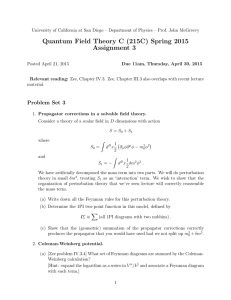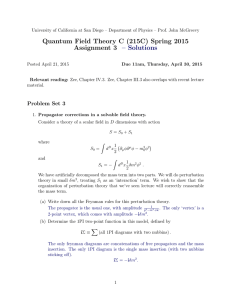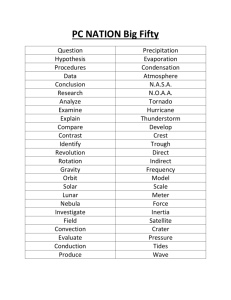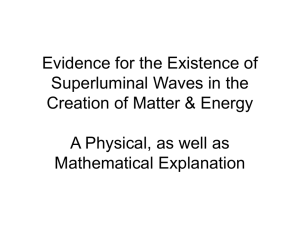The position of a mass on a spring is given by x=(6.5cm)cos[2pi*t
advertisement
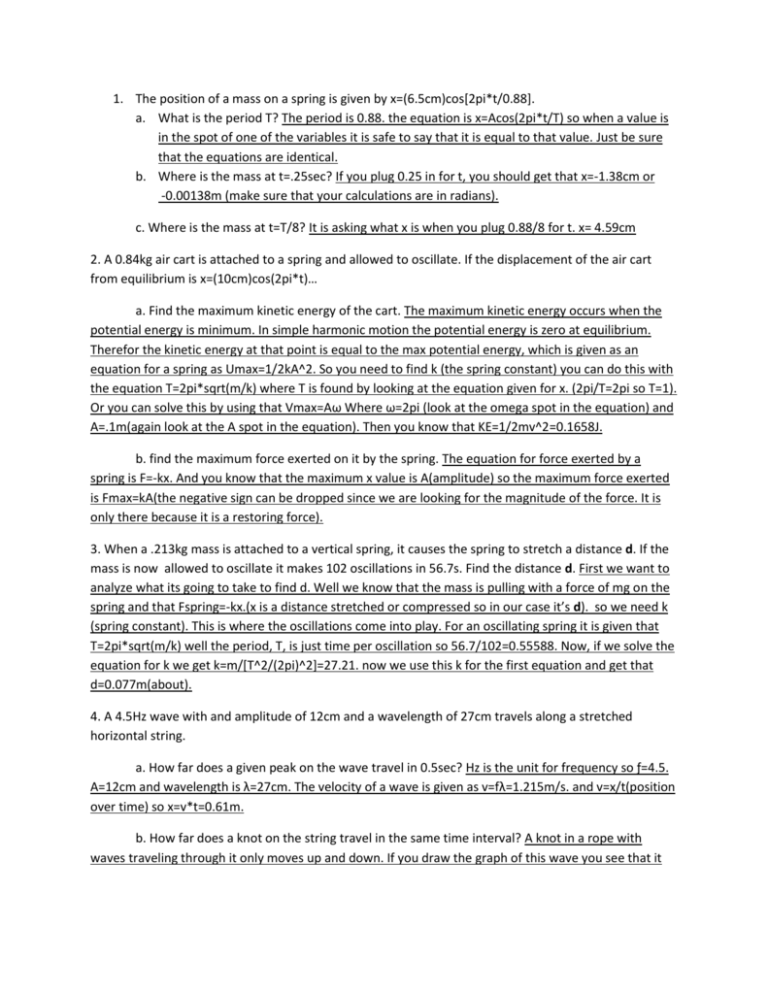
1. The position of a mass on a spring is given by x=(6.5cm)cos[2pi*t/0.88]. a. What is the period T? The period is 0.88. the equation is x=Acos(2pi*t/T) so when a value is in the spot of one of the variables it is safe to say that it is equal to that value. Just be sure that the equations are identical. b. Where is the mass at t=.25sec? If you plug 0.25 in for t, you should get that x=-1.38cm or -0.00138m (make sure that your calculations are in radians). c. Where is the mass at t=T/8? It is asking what x is when you plug 0.88/8 for t. x= 4.59cm 2. A 0.84kg air cart is attached to a spring and allowed to oscillate. If the displacement of the air cart from equilibrium is x=(10cm)cos(2pi*t)… a. Find the maximum kinetic energy of the cart. The maximum kinetic energy occurs when the potential energy is minimum. In simple harmonic motion the potential energy is zero at equilibrium. Therefor the kinetic energy at that point is equal to the max potential energy, which is given as an equation for a spring as Umax=1/2kA^2. So you need to find k (the spring constant) you can do this with the equation T=2pi*sqrt(m/k) where T is found by looking at the equation given for x. (2pi/T=2pi so T=1). Or you can solve this by using that Vmax=Aω Where ω=2pi (look at the omega spot in the equation) and A=.1m(again look at the A spot in the equation). Then you know that KE=1/2mv^2=0.1658J. b. find the maximum force exerted on it by the spring. The equation for force exerted by a spring is F=-kx. And you know that the maximum x value is A(amplitude) so the maximum force exerted is Fmax=kA(the negative sign can be dropped since we are looking for the magnitude of the force. It is only there because it is a restoring force). 3. When a .213kg mass is attached to a vertical spring, it causes the spring to stretch a distance d. If the mass is now allowed to oscillate it makes 102 oscillations in 56.7s. Find the distance d. First we want to analyze what its going to take to find d. Well we know that the mass is pulling with a force of mg on the spring and that Fspring=-kx.(x is a distance stretched or compressed so in our case it’s d). so we need k (spring constant). This is where the oscillations come into play. For an oscillating spring it is given that T=2pi*sqrt(m/k) well the period, T, is just time per oscillation so 56.7/102=0.55588. Now, if we solve the equation for k we get k=m/[T^2/(2pi)^2]=27.21. now we use this k for the first equation and get that d=0.077m(about). 4. A 4.5Hz wave with and amplitude of 12cm and a wavelength of 27cm travels along a stretched horizontal string. a. How far does a given peak on the wave travel in 0.5sec? Hz is the unit for frequency so ƒ=4.5. A=12cm and wavelength is λ=27cm. The velocity of a wave is given as v=fλ=1.215m/s. and v=x/t(position over time) so x=v*t=0.61m. b. How far does a knot on the string travel in the same time interval? A knot in a rope with waves traveling through it only moves up and down. If you draw the graph of this wave you see that it travels down A down A up A up A in one period. So distance traveled is 4A. Since T=1/f=0.222, 0.5sec is 2.25*T the knot travels 2.25*4A which is 1.08m.

